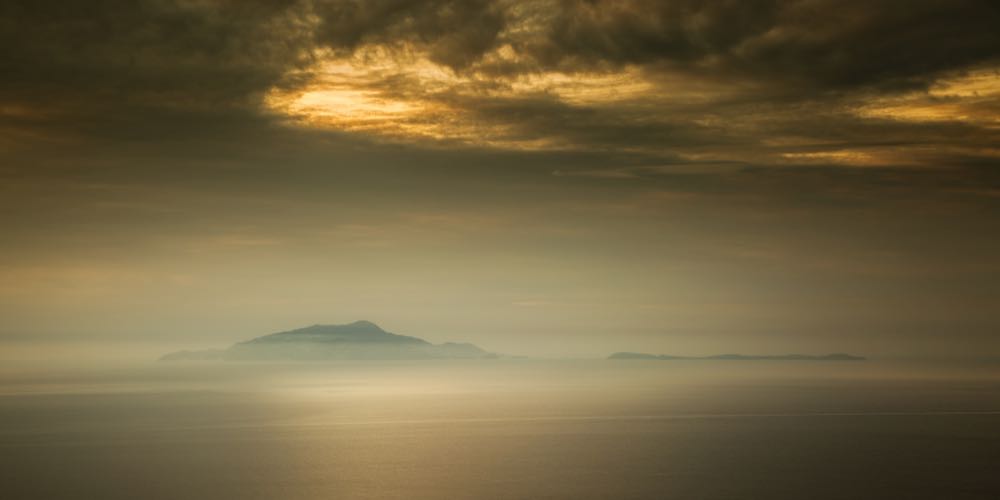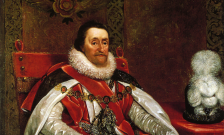Pierre Manent has identified the modern project's new religion, focused on the autonomous individual and a naturally harmonious "Humanity."
Real Lessons from Fake History
Eugene Vodolazkin is a thinking person’s novelist. The Ukrainian-born intellectual is a medieval scholar and an expert in Russian history and folklore at Pushkin House—an impressive academic resume for a contemporary fiction author. But if you expect him to infuse his novels with the dry dust of academia, you are mistaken. For a medievalist, Vodolazkin’s novels are wildly experimental. Transmuting old facts and fables into fresh fiction, Vodolazkin is a literary alchemist whose novels invite us to think like medievals and mystics in the modern wasteland. A traditionalist without being a reactionary, Vodolazkin creates literary space for contemporary readers—not only to envision an old way of life—but to long for its lost goodness.
Take his 2012 novel, Laurus, a dizzying admixture of fictionalized hagiography, mystical time travel, moral philosophy, and satirical jest set in medieval Russia. Laurus was a global phenomenon, clinching both of Russia’s major literary awards and subsequently translated into a multitude of languages. This is par for the course for the inimitable Vodolazkin, who won the prestigious Solzhenitsyn prize in 2019 and whose English translations also include the equally deft Solovyov and Larionov, The Aviator, Brisbane, and his latest offering: A History of the Island.
A History of the Island is Vodolazkin’s most ambitious novel to date for the very good reason that it is exactly what the title proclaims. The main character of the story is … the Island, an unnamed fictitious nation existing in our time on our planet. Now, frankly, there is no reason why this novel should work. If the idea was pitched to me as a publisher, I would reject it out of hand. Experimental craftsmanship is all very well, but even an author of Eugene Vodolazkin’s caliber ought to be prudent, for heaven’s sake. Who is going to read a novel about a country?
But that is the whole point. A History of the Island is a poignant and satirical history of history itself, taking as its subject an imaginary Island that is at once wholly itself and also eerily like Vodolazkin’s own land—and that of every reader. Attentive readers will recognize historical echoes not only of Vodolazkin’s Russia, but also of other nations—England, France, Italy, the United States, and more. In creating a fictionalized history of an imagined Western land, Vodolazkin at once satirizes, honors, and laments our shared heritage with its manifold glories and failures. Along the way the novel engages in a sort of meta-analysis of history, raising complex questions such as: Is history cyclical or linear? Are the historical events predetermined or unpredictable? Are time and history moving toward an inevitable end? And perhaps most essential of all, is the narrative arc of history a tragedy or a comedy?
Readers familiar with Vodolazkin’s other novels will recognize his distinctive voice, juxtaposing poignant depth with self-aware wit. Vodolazkin unites fantastical farce and cultural satire with the musings of moral philosophy and mystical theology. Imagine Monty Python writing a fake history of the West with St. Anthony the Great and Thomas Aquinas. Throughout the novel the narrative voice is dizzying in its scope, making us laugh while at the same time provoking thought, and even, perhaps, repentance.
This is a novel that sets out to challenge modern sensibilities and invite a return to the traditional mind. The text declares itself “our renowned country’s first historical chronicle,” which originates not in academia, but in the Island’s monasteries. “Monks wrote A History of the Island. Nothing surprising there: only someone focused on eternity is capable of depicting time.” And in this distinctly counter-modern statement, we begin to perceive human culture through Vodolazkin’s medieval lens. On the Island, the beating heart of society is located not in political structures, but in spiritual communities whose purpose is not domination, but preservation. This distinctly Judeo-Christian intellectual tradition is, from Vodolazkin’s perspective, better. “In the chroniclers’ opinion,” muses the Island’s King Parfeny, “when a history was located within a sacred space, it was protected from forgery. People handle history more freely now. Anyone at all, in any place, writes history. Might the reasons for numerous falsifications lie there?” From the opening pages, the novel’s political vision is sublimated to a spiritual reality, a surprising cosmic framework in a novel about national identity. But this preliminary counter-modern scaffolding is only the beginning.
The surprises keep coming as Vodolazkin challenges multitudinous modern assumptions about the nature of government and the trajectory of history. The novel subverts Marx’s narrow doctrine that everything is political by posing a political thought experiment (“Imagine an Island whose history is much like ours.”) and proposing the existence of eternal realities beyond the scope of, say, materialism and Machiavelli. According to its monastic chroniclers, History was written by a series of pious and discerning monks over time beginning at the birth of Christianity and traversing toward a nebulous now. History begins in the liminal time between paganism and Christianity; continues through its own early, middle, and high Medieval age; culminates in the reign of the righteous King Parfeny and Queen Ksenia during which it begins its decline into enlightenment, resistance, industrialization, revolution, capitalism, tyranny, and, finally, anarchy. Throughout History, kings and queens, tyrants and demagogues, and political theories and social experiments rise and fall, offering a wide-angle view of the pathos and absurdities of human civilization.
In direct contrast to the modern project, the novel challenges current assumptions that history is progressive. At one point in the story, modern academia attempts to re-educate the “obscurant” Monk Ilary into writing “new history,” but he refuses. “‘History,’ I answered, ‘is a description of the struggle of Good and Evil, a struggle led by human hands.’” The intellectuals dismiss Ilary as “an interesting product of the Middle Ages,” responding that “history describes not the struggle of Good and Evil but an uninterrupted chain of causes and effects.” At this, Ilary resigns his professorship and returns to the monastery, declaring that “the monk’s vestments fit me better than a professional robe.” Throughout the story, the monastic chroniclers maintain their spiritual and literary tradition in the face of societal change, and this is the salient point. The academy and the monastery’s fundamentally opposing perspectives on history cannot be reconciled. Either history shoulders moral weight or it doesn’t, and modernity has so utterly declared its allegiance to the latter assumption that the former is now all but lost. In fact, as History records, so many, many things are lost in the steady march of time. If you find yourself lamenting as you read, you are reading properly.
We moderns are so jaded that we assume on the one hand that history is progressive, and on the other that we are doomed to death and obscurity along the way.
Monk Ilary’s conflict displays Vodolazkin at his most profound, embodying the subversive nature of the traditional mind in a crumbling moral and social order. In the last gasps of a decaying civilization, virtue becomes dissent, creating a complex ethical landscape for honorable citizens. The novel engages this problem in multiple situations over time. When a society becomes corrupted, how do good people live? Do we withdraw or engage? What do we protect and what do we overthrow?
Lest these questions remain disconnected abstractions or moralistic semantics, Vodolazkin gives us a miracle and a mystery. The virtuous rulers, King Parfeny and Queen Ksenia, have dwelled on the Island for 347 years—and nobody, least of all themselves—knows how they have survived or for what purpose. For much of that time they have reigned justly, but if the Island shows us anything, it is that things change. As the Island “progresses,” Parfeny and Ksenia find themselves cast off the throne, but still very much alive. In true modern literary fashion, they are recruited to annotate the text of History, adding a much-needed personal element to the historical narrative—and a jocund wink at the literary establishment. As the saying goes, those who cannot do, teach. Parfeny and Ksenia are the beating heart of the novel, pointing us to a higher reality in their miraculous presence and embodying the goodness of civilization. They exemplify devotion in marriage and virtue ethics in statesmanship. Along with the Monk chroniclers and a handful of dauntless allies, they dwell in the complicated intersection of preservation and disruption required of upright leaders in a collapsing society. At the same time, they are not ciphers; they are fully human, plagued by fallibilities and uncertainties even as they struggle to maintain their piety and integrity.
Along with their essential role in the narrative, Parfeny and Ksenia are Vodolazkin’s necessary attempt to backfill the biggest problem of this novel: the lack of meaningful characters. In historical inquiry, people become abstractions, and in a story about the life of a nation, everybody dies. Novels are necessarily personal, and Vodolazkin takes an enormous risk in writing one with only two permanent human characters, both of whom will apparently live forever. What are the stakes? Why should we care? But again, that is the point. We moderns are so jaded that we assume on the one hand that history is progressive, and on the other that we are doomed to death and obscurity along the way. What if the land itself is worth saving? And what if a mystery and a miracle are interventions to that end?
In real time, Parfeny and Ksenia are in Paris consulting with renowned director Jean-Marie Leclerc on his film version of History, in which actors portray them as main characters and their lives as plot. This two-strand interlocking narrative—the Island’s historical arc on the one hand and the royal couple’s contemporary experiences on the other—form a parallel structure that unites public and personal meaning. Vodolazkin shows his chops as a craftsman here as the novel weaves the narrative strands together, sometimes in isolated events, sometimes in repetitions, patterns, cycles, inversions, chiasms, and returns. These interweaving threads are not literary posturing; they serve a meaning-making function in the story. If the battle between Good and Evil is the truer story, then isn’t everything meaningful? What if it all converges toward a benevolent end? And if so, how shall we live?
Meanwhile, chaos brews on the Island and the righteous Parfeny and Ksenia are in exile. What then? If Socrates is right and the city is like the soul, how does the trajectory of the history of the Island intersect with the miraculous lives of its righteous rulers? Why have they lived so long, and does it have anything to do with the lost prophecy of Agafon the Forward-Looking, whose prognostication about the fate of the Island was famously removed for safe-keeping by Prokopy the Nasal, who unfortunately died without revealing its whereabouts? The text of History conceals as much as it reveals, demonstrating that even if we accept that history is moral and meaningful, it also remains mysterious.
In the end, the miraculous Parfeny and Ksenia discover that a miracle is never itself the answer, but is instead an invitation to the true healing of the city and the soul, which is, of course, courageous and sacrificial love. At some point, historical complexities, prophetic declarations, ethical dilemmas, cultural heritage, and human frailties, however meaningful, cease to matter in the face of immense suffering when what is needed is not final answers, but intervening grace. And perhaps the history of the Island and the lives of its rulers were always destined to merge in a great crisis that is also a great reckoning. In this overlapping chronicle of society and selfhood, all of the sins, sicknesses, and sufferings of a troubled history eventually encounter the deepest mystery of all–the human capacity to love.


